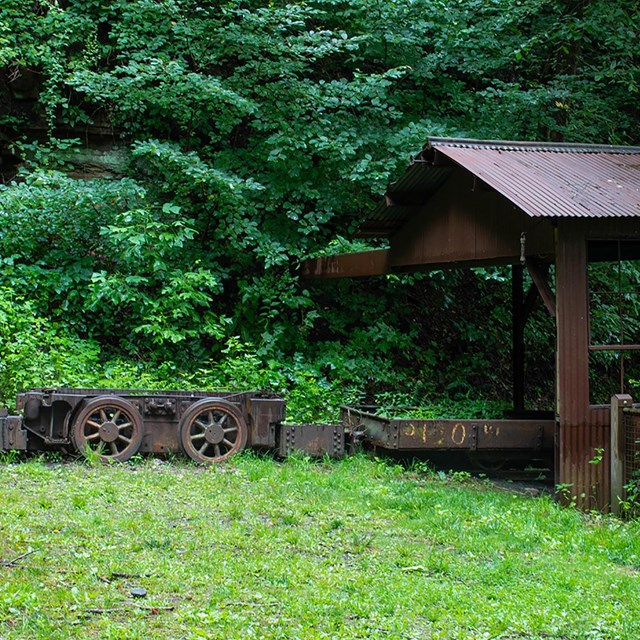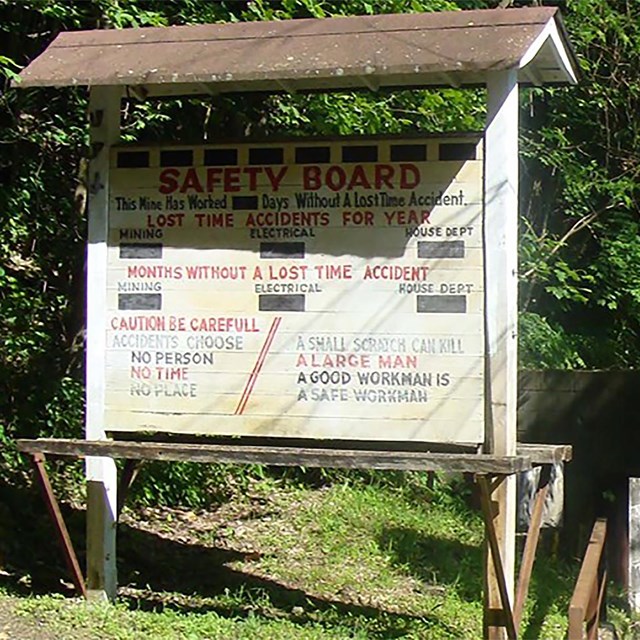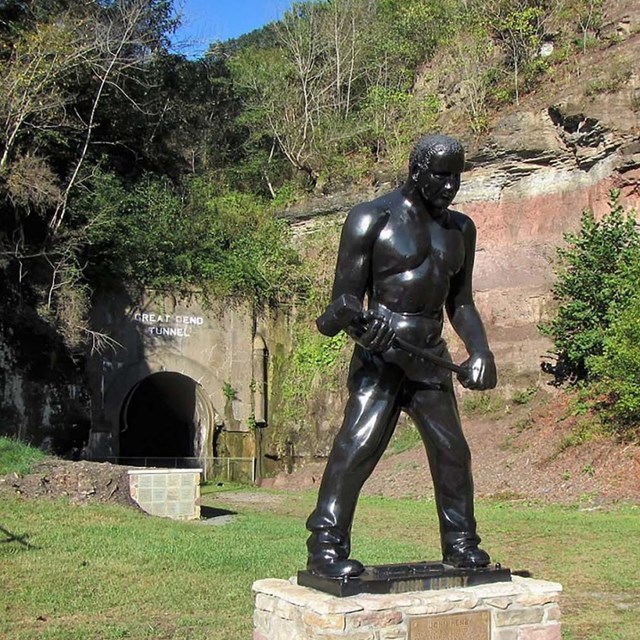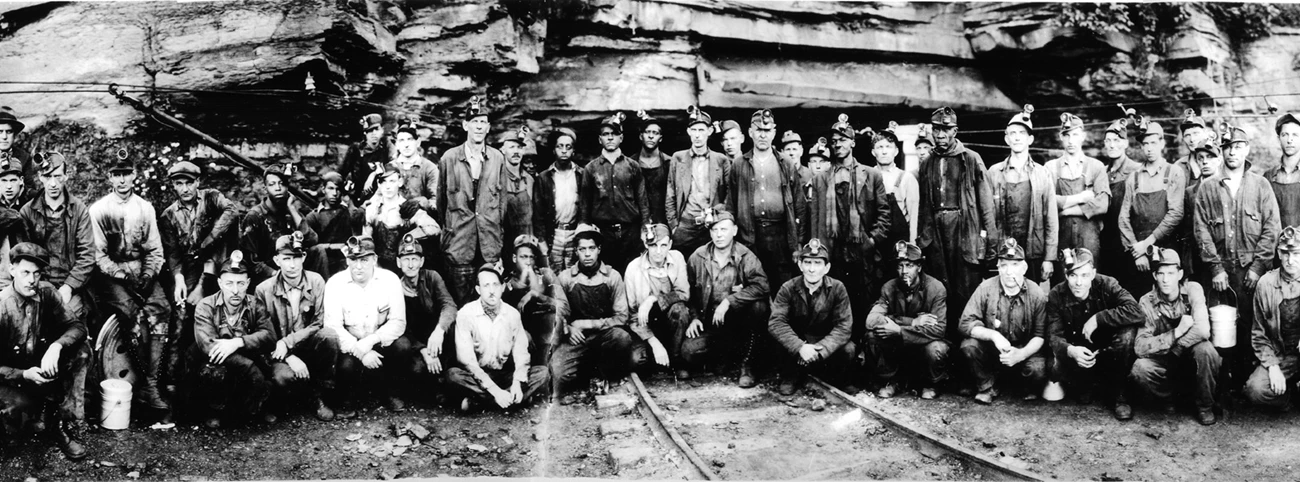
NPS Coal Mine DisastersFor many years the New River Gorge was a major supplier of coal. Coal was the primary energy source for the industrial world. It powered the factories, railroads, and ships and heated the homes and buildings of the time. Mining coal always posed a direct danger to the people who dug it from the earth. Since records began in 1883, 21,000 West Virginia coal miners have died in accidents. Most perished one at a time in roof falls and machinery accidents. When a mining accident results in the death of three or more miners, it is classified as a disaster. Over its coal mining history, New River Gorge had three major mine disasters. 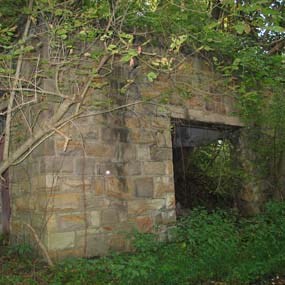
NPS First Red Ash Mine DisasterThe first mine disaster happened on March 6, 1900, in the Red Ash Mine near the railroad town of Thurmond. The night before, a ventilation trap door was carelessly left open. These doors helped prevent toxic gases from filling the mines. In the morning, unknown to the miners, natural methane gas filled the mine. This flammable gas ignited due to the open flames of the miners' headlamps. The blast ignited explosive coal dust in the mine air and several kegs of blasting powder. While some miners died in the explosion, most casualties were victims of afterdamp. Afterdamp is a poisonous atmosphere that results from mining explosions. Carbon monoxide, a toxic gas, suffocated miners unable to escape in time. A total of 46 miners died in the disaster. Second Red Ash Mine DisasterRed Ash Mine was also the site of the second mine disaster. This unlucky mine had reopened and was now connected to the Rush Run Mine. On March 18, 1905, disaster struck again. Near the end of the day, a mine cart ran over loose explosives. Sparks from the explosives ignited coal dust suspended in the air of the mine. The blast left 13 miners trapped or dead. The following day a rescue party of 11 men entered the mine only to face yet another explosion. It is unknown if it was headlamps or burning timbers that ignited the air for the second explosion. Ten days later, mine ventilation was finally restored. Rescuers entered the mine and found that all 24 men were dead. Layland Mine DisasterThe final mine disaster at New River Gorge was also the deadliest. The No. 3 Layland Mine near Quinnimont was consider one of the safest mines in New River Gorge. A recent inspection stated it was in "first class condition". No one expect disaster to strike such a safe mine. But on March 2, 1915, a massive explosion rocked the No. 3 Layland Mine. Again, the cause was ignition of natural methane gas and suspended coal dust. The explosion was so powerful it blew out from the mine entrance. This force killed an unfortunate grocery delivery man who was walking by the mine. Of the 164 men working in the mine, 111 died in the explosion or from suffocation. Some survivors in the mine barricaded themselves against the afterdamp. To stave off hunger, they chewed on bootlaces and the bark on wooden mine props. Rescue operations helped the remaining 53 miners to escape over several days. The final casualty count was 112 men including the grocery delivery man. The disaster was a grim reminder that no mine was ever completely safe. 
NPS Industrial DisastersCoal mining was not the only source of industrial disasters in New River Gorge. The Hawks Nest "Incident" is one of if not the worst industrial disaster in the history of the United States. In 1930, construction began on a 3 mile hydro-electric water diversion tunnel. This tunnel's job was to supply power to an industrial area on the nearby Kanawha River. To complete the tunnel, workers had to dig through high grade silica rich sandstone. When drilled, this type of rock produces a very fine dust. Breathing the dust is like inhaling finely ground glass particles into the lungs. Drilling a tunnel was not considered the same as mining. The many underground safety regulations used by miners were not in place. 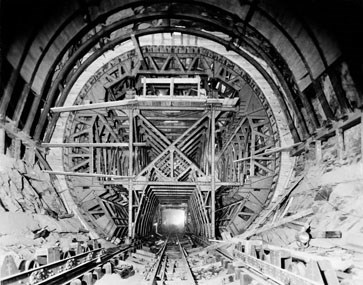
NPS Hawks Nest Tunnel DisasterDuring the Great Depression, many people travelled the country looking for work. The Hawks Nest tunnel provided work for many desperate families. The majority of Hawks Nest workers were African-Americans. Many migrants also found work at the tunnel. These men were never told of the dangers of their new work. They worked in confined spaces with no ventilation or dust control and no dust masks. Under these poor safety conditions, workers quickly began to fall ill. They could only tolerate the poor conditions for a few months. When the silica dust reached deadly levels in their lungs, they developed silicosis. Silicosis causes scars in the lungs and makes breathing very difficult. Many died from the disease or developed life long breathing disabilities. The officials in charge of the project knew of the dangers of the work. But it would be expensive to stop work and provide safer working conditions. Instead, they decided to deny any problems and complete the tunnel as quick as possible. For every worker that fell ill, the companies hired another to take his place. From the desperation of the Great Depression came a steady supply of workers and victims. Disasters LegacyToday, visitors to New River Gorge can see many ruins of the industrial past. Abandoned mines, ruined coke ovens, and town remnants are visible throughout the park. The Hawks Nest Tunnel is still in operation. Water diverted for the tunnel comes from the impoundment on the New River at Hawks Nest Dam. Visitors to Hawks Nest State Park can see this water from the overlooks. These ruins and facilities stand as monuments to the lives of the people who worked here. Through danger and disaster, these people were the true source of our nation's power. More New River Gorge History
|
Last updated: December 4, 2024

